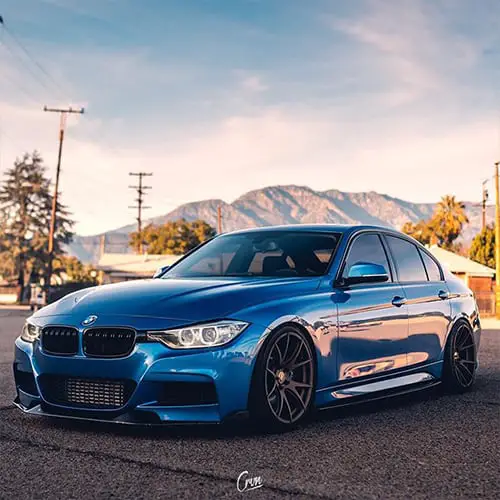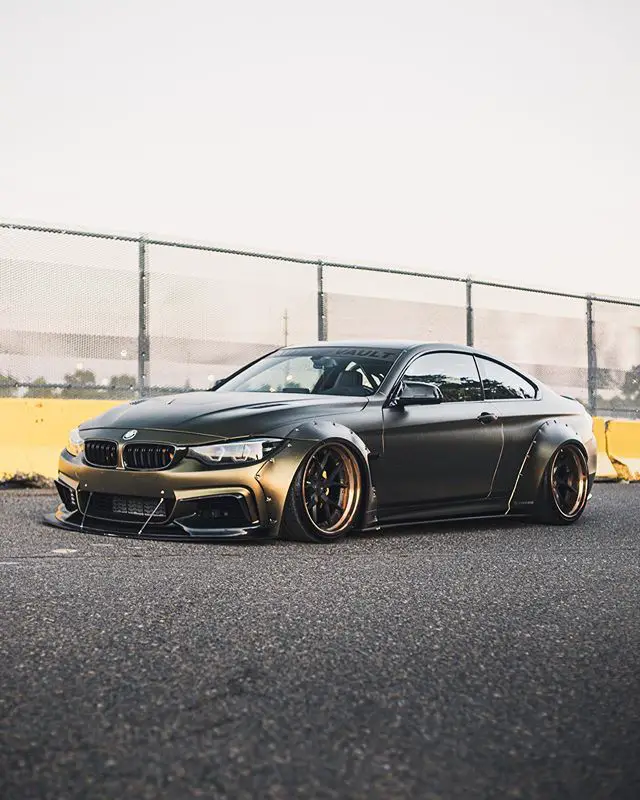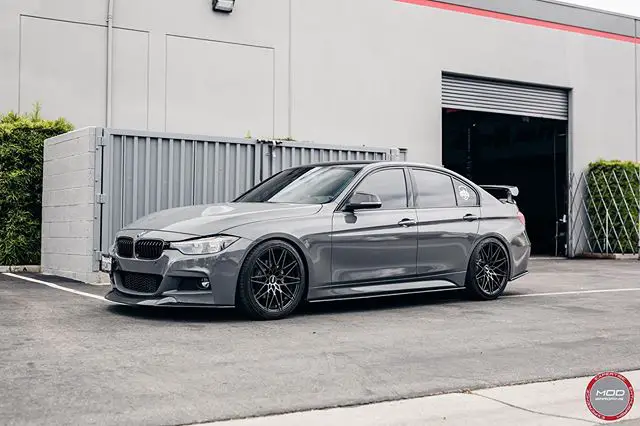BMW FBO Meaning
In the world of car modification and tuning, the term “FBO” is a fairly common one. To those of us either uninitiated or only recently initiated, we first need a bit of background on this term.
The term “FBO” stands for “Full Bolt-On.” A “Bolt-On” refers to modifications made with components and other parts that can be bolted onto your car directly without any tuning, and also usually without any additional process like cutting or welding.
The relative simplicity of bolt-on upgrades has made them very popular among enthusiasts with less experience than those modder veterans that exist out there. BMWs are also a popular model for bolt-on upgrades, so in today’s piece, we’ll be looking at what it means to be FBO, and how it works for BMW cars.

What Does It Mean When a Car is a Full Bolt-On?
To achieve “Full Bolt-On” status, a car technically has to have all these simple modifications done as their particular model of car permits. When the modification can be fixed in place relatively simply, it counts as a bolt-on.
There are many parts that could potentially be added in this way, however, and so most people consider having all of the following bolt-on upgrades makes your car an FBO.
Shocks – It’s hard to imagine an FBO modification plan without changes to the shocks. A popular choice is a high-performance shock upgrade. This makes contact between tires and vehicle more stable and boosts your suspension to make uneven, bumpy, or otherwise uncomfortable road surfaces more comfortable, especially at speed.
Alloy Wheel Rims and Special Tires – Alloy rims are a key part of a car’s aesthetic even when dealing with stock models. For modified cars, having a distinct look on the wheels is among the more noticeable ways of allowing your FBO car to stand out from the crowd. Bigger, wider tires are useful for adding more traction.
While the tires and wheels are bolt-on upgrades, they may also require some additional bodywork. If the tires you choose for your car are too big for the wheel arches after lowering the vehicle, then you’ll have to expand those, which may involve cutting.
Steel-Braided Brake Links – This is an upgrade to the regular rubber brake line. To boost brake response, some invest in these strong brake links, which help transfer additional pressure to the caliper when you press on the brake pedal. This is a bolt-on that can cost you some serious money, though.
Seats – Since bolt-on upgrades are almost all about boosting the car’s horsepower and performance, you need to upgrade your seats to match. No, the seats don’t give more horsepower, but they do provide better lateral support when taking tight corners, and when performing any tricky maneuver.
Anti-Roll Bars – When you take corners at speed, the less roll there is in the car’s body, the better. An existing BMW 3 Series, for example, will already have these installed, but bolt-on upgrades can make their effect even greater.
Turbo – When stock turbos simply won’t do, a new turbo to give that extra boost to the redline or reduce overall lag time is a must. Stock turbos have got better over time, so whether or not car owners opt for this upgrade will depend on what exactly they want to get out of their vehicle. When every horsepower counts, a bolt-on turbo will help.
Exhaust – Many upgrade their exhaust for the sound — sometimes these are called Ricers — but with some cars, like the BMW 335i, a bolt-on exhaust system can also deliver real results in performance.
Intake – The final item on this list, it’s not often a big deliverer on horsepower gains, but it can improve throttle response and possibly even mileage depending on what kind of upgrade you get.
There are some who remain unconvinced as to the value of bolt-ons. They regard them largely as cosmetic changes and as having no real or lasting results on the car’s performance. Others disagree, pointing to the increasing quality and efficacy of these upgrades to allow performance enhancement to happen with minimal technical expertise or drastic modification to the car’s form.
Now, let’s deliver into FBM and BMW cars.

What is FBO BMW?
Among the most popular models to receive bolt-ons is the BMW 3 Series, specifically the 335i, which can be dialed up to 400 horsepower or so when your bolt-ons stretch to the exhaust system, turbos, and some other key engine components.
Arguably the key to the popularity of bolt-on modifications for the BMW 335i lies in its engine. Many in the performance upgrades community see the BMW N54 twin-turbo inline 6 engine as being among the best candidates for bolt-on upgrade.
The first reason for this is that the N54 engine requires relatively few bolt-ons to transform the 335i from a decent but somewhat subdued professional-but-sporty sedan into a real “beast-mode” car. Compared with other engines even in the BMW line, the N54 is very welcoming of these upgrades and allows modders to reap benefits that are more noticeable.
Because you don’t need to make so many upgrades, it means that to turn your stock 335i into an FBO 335i, you won’t need a big budget. Everything can be achieved to a high degree of success with much less money than you’d need for, say, an Audi A4.
A final reason that the 335i is a popular candidate for FOB status is that it allows owners to improve on some of the inherent issues with their N54 engines. For example, the OEM charge pipe in the N54 engine is actually prone to splitting, so switching out some of the problem components is an easy way to improve the engine’s overall performance.
Regardless of the model of BMW you are turning FBO, if t has an N54 engine, then there’s one more additional and simple maintenance job on top of your modification will really help deliver results. If you know the location of your fuel injection system is, and it’s a direct injection system, then you need to check it. Whereas multi-point injection systems spray gasoline down the intake manifold runners, a direct injection system does not. The N54 has such a system, and without the gasoline to help keep it clean, the result is a gunky mess down there that will prohibit your FBO upgrades from working properly.
The solution is a quick walnut blasting to get them looking clean again. Clean up these and your intercooler and the bolt-on upgrades are going to have much more impact on the N54 engine. In other words, quick cleaning of the intake downpipes on top of your existing bolt-ons makes a huge additional difference. Not every FBO car can claim the same thing.
What makes a car FBO? In truth, it’s more subjective than it seems. While many agree that there’s a common list of parts to replace your OEM parts that must all be bolted on to get that FBO label, there’s certainly nothing official that says so. Add as many or as few upgrades as you need until the results are right, and then you have your full bolt-on BMW.

You Might Also Be Interested In…
Can BMW Charge at Tesla?
Can BMW Charge at Tesla? As of now, BMWs can't directly charge at Tesla Supercharger stations because Tesla uses a proprietary connector. However, with the right third-party adapter, BMW owners might be able to make it work, but it's always good to double-check...
Are BMW Motorcycles Reliable? A Comprehensive Dive into the World of BMW Bikes
Are BMW Motorcycles Reliable? BMW motorcycles are renowned for their top-notch engineering and build quality, making them a reliable choice for riders around the world. Whether you're hitting the open road or tackling rugged terrains, you can count on a BMW to be a...
Can BMW Take 87 Gas? Discover the Truth Behind the Octane Debate!
Can BMW Take 87 Gas? Certainly! While a BMW can technically run on 87 octane gas, it's not the optimal choice. BMW recommends using premium fuel for most of their models to ensure the best performance and longevity of the engine. So, while it might be tempting to...
Embrace the Future with the BMW Genius Program
You know, they often say that 'knowledge is power'. Well, that's never been truer than in the case of BMW's groundbreaking initiative - The BMW Genius Program. Tailor-made for every BMW enthusiast out there, this program sheds light on the latest technological...
A Comprehensive Dive into the BMW N63: A Blend of Power, Performance, and Precision
Hey there, gearheads! Welcome to a deep dive into the fascinating world of one of the most renowned engines out there: the BMW N63. We're about to embark on an exciting journey, exploring the good, the bad, and the powerful of this engineering marvel. Are you ready...
How BMW TPMS Works: A Comprehensive Guide
When it comes to innovation and performance, BMW never falls short. But how well do you know the intricacies of your vehicle, specifically the Tire Pressure Monitoring System (TPMS)? Let's take a journey to understand how BMW TPMS works. How BMW TPMS Works So,...
Can BMW Keys Be Reprogrammed? Your Comprehensive Guide
Ah, the wonders of technology! It's in everything these days, from the appliances in our homes to the phones in our hands. And of course, it's a big part of our beloved vehicles too, particularly in prestigious brands like BMW. One feature that often leaves car...
How BMW VANOS Works: A Comprehensive Guide to Variable Valve Timing
Introduction Welcome to our comprehensive guide on the fascinating topic of how BMW VANOS works. If you've ever wondered about the inner workings of your BMW engine and how it achieves optimal performance, you're in the right place. In this article, we'll take a...
How BMW Models Work – BMW Model Names Explained
BMW, or Bayerische Motoren Werke, a name synonymous with luxury, performance, and automotive engineering, often leaves many of us scratching our heads when it comes to deciphering their model naming conventions. Do you ever wonder what these series of letters and...
Will BMW Wheels Fit Mercedes? Exploring the Compatibility Between Two Iconic Brands
When it comes to automobiles, BMW and Mercedes-Benz are two of the most renowned and prestigious brands in the world. Both manufacturers have established themselves as leaders in the industry, producing vehicles that exude luxury, performance, and style. However,...

